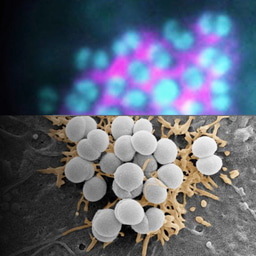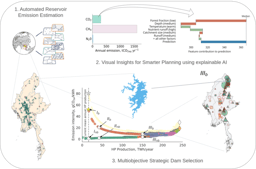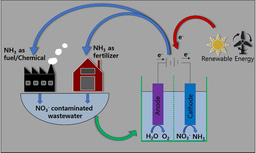Teff: The Ancient Grain with a Modern Mission
Published in Chemistry, Sustainability, and Agricultural & Food Science
Teff is a true marvel of nature, boasting a unique nutritional profile that sets it apart from conventional cereals. Rich in carbohydrates, unsaturated fatty acids, minerals, and phytochemicals, teff is a veritable "superfood" that can play a crucial role in addressing global challenges related to food security, nutrition, and health. Beyond its exceptional nutritional value, teff is also a testament to the resilience of nature. Adapted to thrive in the harsh environmental conditions of Ethiopia, teff exhibits remarkable tolerance to drought, waterlogging, and other abiotic stresses. This climate-smart property makes teff an invaluable asset in the face of the ever-increasing challenges posed by climate change. Yet, despite these remarkable attributes, teff's productivity remains alarmingly low, with an average yield of just 1.76 tons per hectare. This stark contrast between teff's potential and its current performance presents a pressing challenge that demands our collective attention.
Unlocking the barriers to Teff’s productivity: The reasons behind teff's low productivity are complex and multifaceted. Our review has identified several intrinsic and extrinsic factors that have hindered the crop's improvement efforts over the years. Intrinsically, teff faces a unique set of challenges, including its delicate floral biology, susceptibility to lodging, small seed size, and shattering. These inherent complexities have made conventional breeding approaches arduous and time-consuming, limiting the progress in developing high-yielding, climate-resilient teff varieties. Extrinsically, teff is also vulnerable to abiotic stresses such as drought, soil acidity, and waterlogging, which further exacerbate the challenges faced by smallholder farmers. The impact of climate change on teff production has become increasingly evident, underscoring the urgent need for innovative solutions.
A call to Action for Global Researchers: To unlock the full potential of teff and secure its place as a key player in the global food system, we call upon the global research community to join us in a concerted effort to address the existing challenges and capitalize on the opportunities presented by this remarkable crop. We invite you to explore the vast genetic diversity of teff, which holds the key to unlocking new avenues for improvement. By leveraging advanced breeding techniques, such as mutation breeding, TILLING, and gene editing, we can overcome the intrinsic barriers that have long hindered teff's productivity.
Moreover, the integration of omics technologies, including transcriptomics, proteomics, and metabolomics, can provide invaluable insights into the underlying mechanisms governing teff's growth, development, and stress responses. These cutting-edge tools can enable us to develop targeted interventions and tailor-made solutions for enhancing teff's resilience and productivity. Speed breeding and marker-assisted selection also hold immense promise in accelerating the breeding process and delivering climate-resilient, high-yielding teff varieties to smallholder farmers. By harnessing these advanced techniques, we can significantly reduce the time required to develop and deploy improved teff cultivars, thereby addressing the urgent need for food security and sustainable agriculture.
Fostering Global collaboration and Capacity building: To truly unlock the potential of teff, we must also invest in strengthening the research infrastructure and building the necessary capacity within the global research community. This includes enhancing access to comprehensive data on teff's genetic resources, improving the quality and completeness of the existing genome information, and fostering collaborative networks that transcend geographical boundaries. By working together, we can leverage the expertise and resources of researchers from diverse backgrounds, combining our knowledge and skills to tackle the complex challenges facing teff. This collaborative approach will not only accelerate the pace of innovation but also ensure that the benefits of our research reach the smallholder farmers and communities who rely on teff as a staple crop.
A future bright with Teff’s Potential: as we embark on this journey of teff's transformation, we are filled with a sense of optimism and determination. By addressing the existing barriers and capitalizing on the crop's remarkable attributes, we can unlock a future where teff becomes a global powerhouse – nourishing people, supporting livelihoods, and contributing to a more resilient and sustainable food system of the globe. We invite you, the esteemed members of the global research community, to join us in this endeavor. Together, let us unravel the untold story of teff and unleash its full potential, paving the way for a more food-secure, nutritious, and climate-resilient future, to ensure that the legacy of teff shines brightly for generations to come globally.
Follow the Topic
-
Discover Agriculture

This journal covers basic science and applied research relating to the agricultural sector in areas such as crop and soil sciences, environmental science, and advances in relevant technologies.
Related Collections
With Collections, you can get published faster and increase your visibility.
Biological control agents mediate plant microbiome for plant health and protection: A blow of air for sustainable agriculture
The global demand for reducing pesticide residues in agricultural produce has increased significantly. Biopesticides and biological control agents (BCAs) agents, when used strategically alongside conventional synthetic pesticides, offer an effective solution for managing agricultural pests while minimizing pesticide residues. Plant growth-promoting biocontrol agents (PGPBCAs) are characterized by three key traits: plant growth promotion, antagonism effects, and induced systemic resistance (ISR). These PGPBCAS employed direct and indirect mechanisams to fascilate plant health and physiology in challenging circumstances. Recently, plant-associated microorganisms have been coined as a second functional genome that exhibits significant variability in terms of diversity, abundance, structure, and function. Over the past two decades, it has been demonstrated that microbial resources play a significant role in attaining the objective of sustainable plant growth and more environmentally friendly treatments for plant diseases. However, at the same time, the biopesticides also encountered numerous challenges in field conditions. The desired function can be influenced by both abiotic factors and biotic , especially interactions with pathogens. A pressing necessity exists to comprehend and advance scientific understanding of the plant microbiome and its interaction with both abiotic and biotic factors. This can be achieved by employing complex molecular, biochemical, and metabolite signaling and response mechanisms to sustain plant growth, protection, and productivity for a continuously growing human population.
Keywords: Pesticide residue reduction; Biopesticides; Biological control agents (BCAs); Plant growth-promoting biocontrol agents (PGPBCAs); Antagonism effects; Induced systemic resistance (ISR); Plant microbiome; Microbial resources; Sustainable plant growth; Abiotic and biotic interactions; Molecular signaling; Plant disease management
This Collection supports and amplifies research related to SDG 2.
Publishing Model: Open Access
Deadline: Jun 01, 2026
Climate-smart Agriculture: Approaches and Practices
Climate-smart agriculture was first defined in 2010 by Food and Agriculture Organization (FAO) of the United Nations as “an approach that helps guide actions to transform agricultural production systems towards green and climate resilient practices.” It refers to a set of sustainable farming methods designed to enhance the productivity and resilience of agricultural production systems that have been affected by climate change. Climate-smart agriculture aims to simultaneously achieve the three outcomes of increased productivity, enhanced resilience, and reduced emissions. In the past decade, integrated, holistic approaches for managing cropland, livestock, forests, and fisheries have been developed by researchers and practiced by agricultural practitioners to sustain and increase crop productivity and yield, enhance resilience to environmental changes, and reduce greenhouse gas emissions.
Keywords: soil health, plant breeding, biochar, carbon sequestration, agrivoltaics, greenhouse gas emissions, climate change, sustainable agriculture
This Collection supports and amplifies research related to SDG 2, SDG 7, SDG 12, and SDG 13.
Publishing Model: Open Access
Deadline: Dec 31, 2025






Please sign in or register for FREE
If you are a registered user on Research Communities by Springer Nature, please sign in